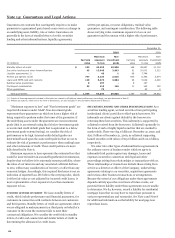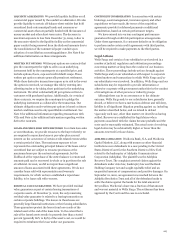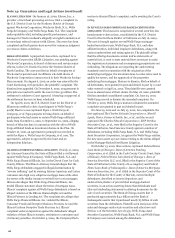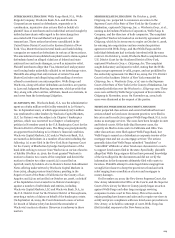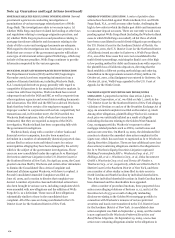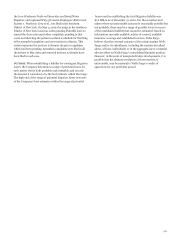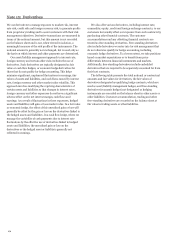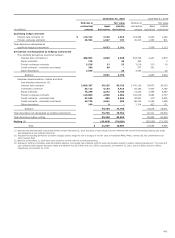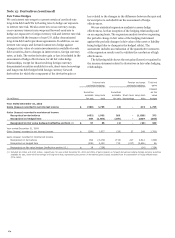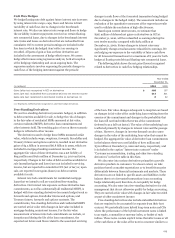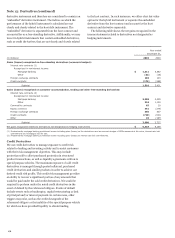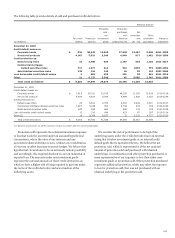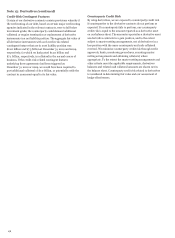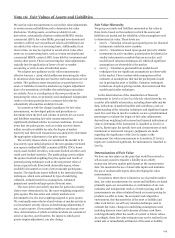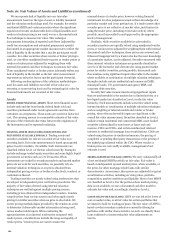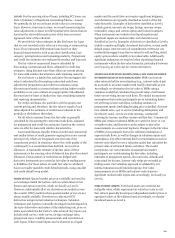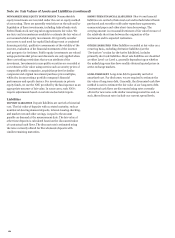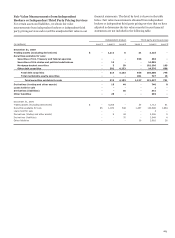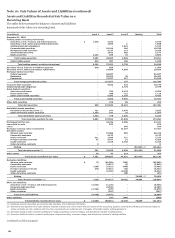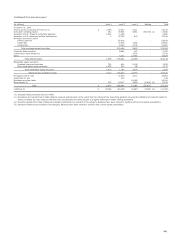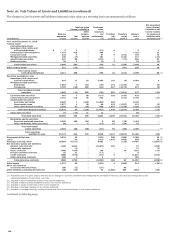Wells Fargo 2010 Annual Report Download - page 178
Download and view the complete annual report
Please find page 178 of the 2010 Wells Fargo annual report below. You can navigate through the pages in the report by either clicking on the pages listed below, or by using the keyword search tool below to find specific information within the annual report.
Note 15: Derivatives (continued)
derivative instrument and therefore are considered to contain an
“embedded” derivative instrument. The indices on which the
performance of the hybrid instrument is calculated are not
clearly and closely related to the host debt instrument. The
“embedded” derivative is separated from the host contract and
accounted for as a free-standing derivative. Additionally, we may
invest in hybrid instruments that contain embedded derivatives,
such as credit derivatives, that are not clearly and closely related
to the host contract. In such instances, we either elect fair value
option for the hybrid instrument or separate the embedded
derivative from the host contract and account for the host
contract and derivative separately.
The following table shows the net gains recognized in the
income statement related to derivatives not designated as
hedging instruments.
Year ended
December 31,
(in millions) 2010
2009
Gains (losses) recognized on free-standing derivatives (economic hedges):
Interest rate contracts (1)
Recognized in noninterest income:
Mortgage banking $ 1,611
5,582
Other (22)
(15)
Foreign exchange contracts 103
133
Credit contracts (174)
(269)
Subtotal 1,518
5,431
Gains (losses) recognized on customer accommodation, trading and other free-standing derivatives:
Interest rate contracts (2)
Recognized in noninterest income:
Mortgage banking 3,305
2,035
Other 224
1,139
Commodity contracts 65
29
Equity contracts 441
(275)
Foreign exchange contracts 565
607
Credit contracts (710)
(621)
Other 10
(187)
Subtotal 3,900
2,727
Net gains recognized related to derivatives not designated as hedging instruments $ 5,418
8,158
(1) Predominantly mortgage banking noninterest income including gains (losses) on the derivatives used as economic hedges of MSRs measured at fair value, interest rate lock
commitments and mortgages held for sale.
(2) Predominantly mortgage banking noninterest income including gains (losses) on interest rate lock commitments.
Credit Derivatives
We use credit derivatives to manage exposure to credit risk
related to lending and investing activity and to assist customers
with their risk management objectives. This may include
protection sold to offset purchased protection in structured
product transactions, as well as liquidity agreements written to
special purpose vehicles. The maximum exposure of sold credit
derivatives is managed through posted collateral, purchased
credit derivatives and similar products in order to achieve our
desired credit risk profile. This credit risk management provides
an ability to recover a significant portion of any amounts that
would be paid under the sold credit derivatives. We would be
required to perform under the noted credit derivatives in the
event of default by the referenced obligors. Events of default
include events such as bankruptcy, capital restructuring or lack
of principal and/or interest payment. In certain cases, other
triggers may exist, such as the credit downgrade of the
referenced obligors or the inability of the special purpose vehicle
for which we have provided liquidity to obtain funding.
176


